Anko, a sweet red bean paste, is an essential ingredient for Japanese traditional confectioneries, called Wagashi. It is a paste made with azuki red beans and sugar, and it’s used in many Japanese dishes and desserts such as pastries, cakes, mochi, and ice cream.
What kind of beans are in Anko red bean paste?
Azuki (also spelled adzuki, 小豆 in Japanese) red beans are used to make the red bean paste. Azuki beans are smaller than other beans such as kidney beans, and they have thick skins. They are highly nutritious with vitamins, fibers, proteins, and minerals.
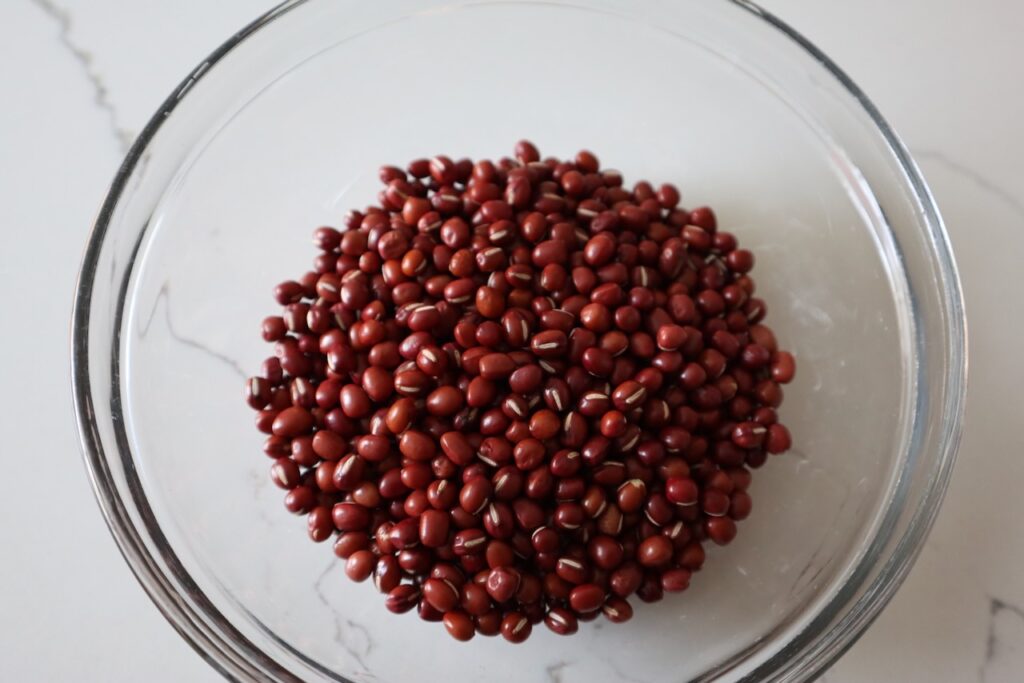
Varieties of Anko red bean paste
- Tsubuan: Azuki beans are boiled and cooked with sugar without being crushed. Tsubuan is the most basic Anko, and it’s used in many home cooked Japanese sweets. This recipe is for how to make Tsubuan.
- Koshian: Beans are boiled and then strained for a smooth texture. Koshian is used in traditional Japanese desserts which have a more sophisticated feel. See our Koshian recipe.
- Shiroan: Instead of adzuki beans, shiroan (shiro an) is made from white kidney beans. It is used in many forms of desserts such as Fruit Daifuku Mochi and baked Manju. See our Shiro An recipe
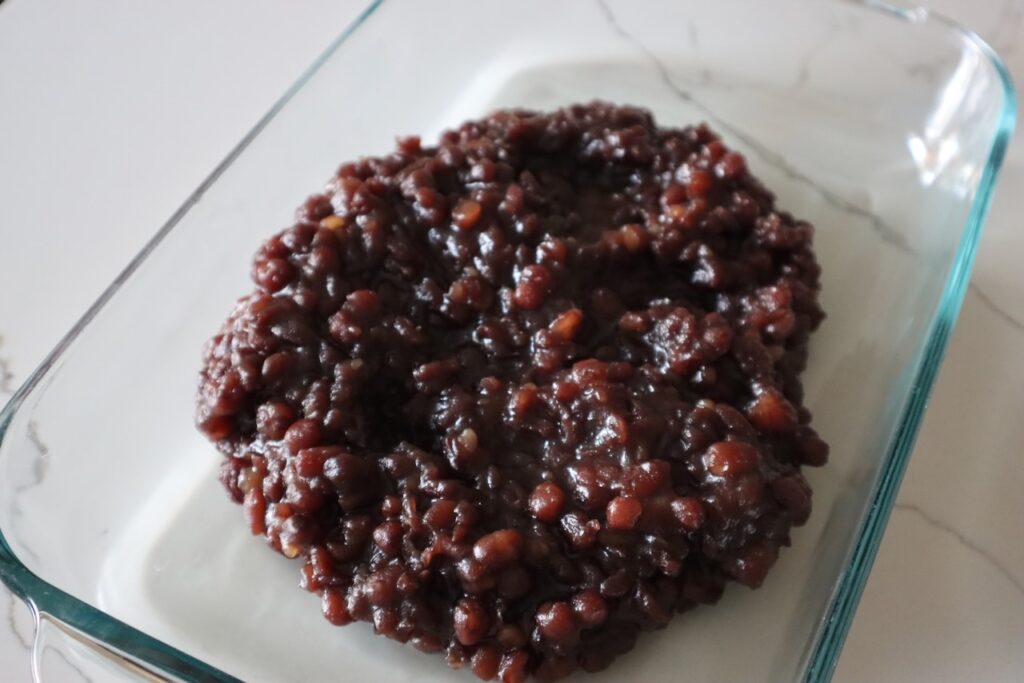
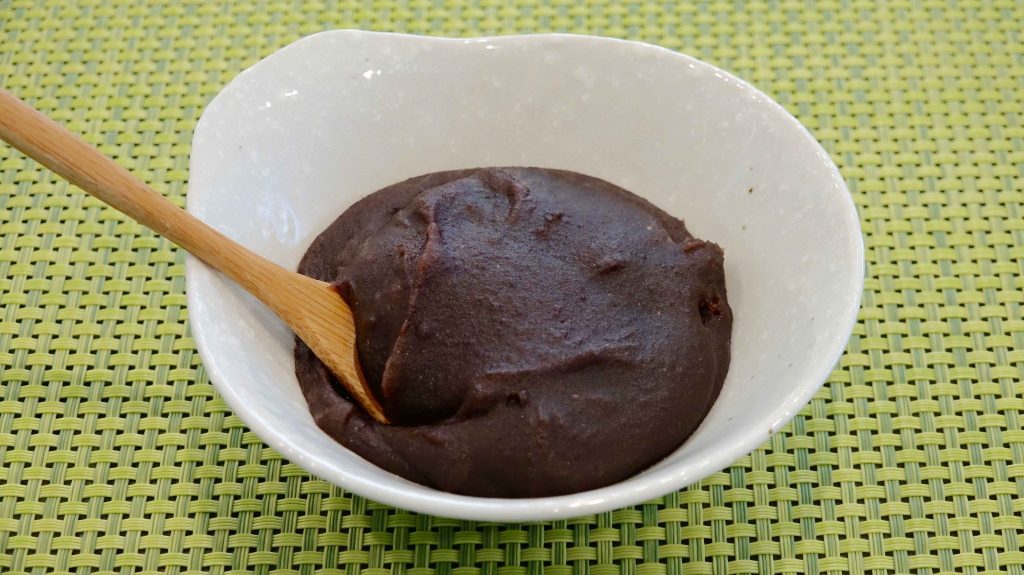
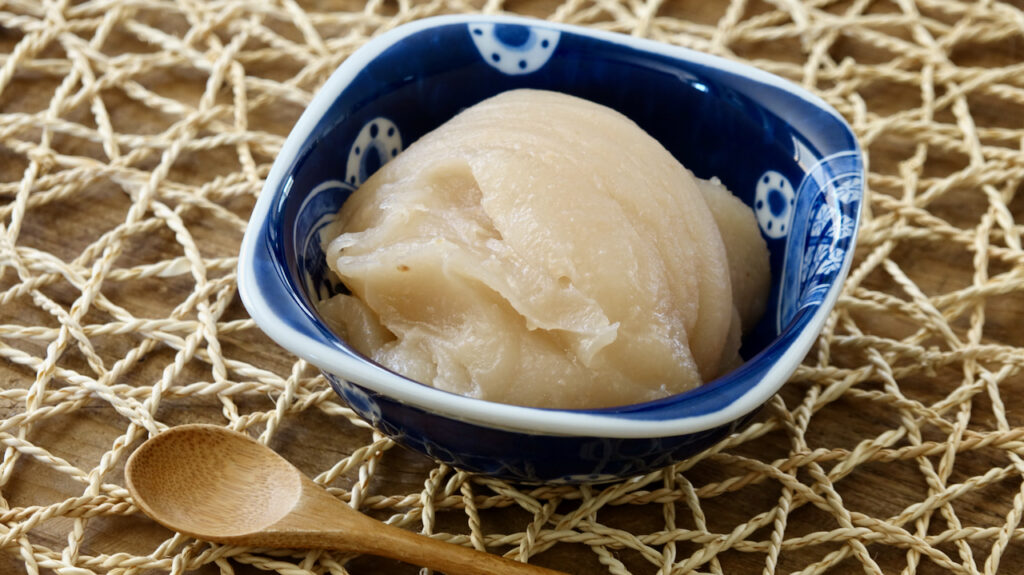
Tips for making Anko red bean paste
- No need to soak the beans: Unlike other types of dried beans, there is no need to soak the dried azuki beans overnight. You can start boiling immediately, and within a couple of hours, beans become soft and ready to be used.
- Discard the water after the first boiling: When the red beans are boiled, it is recommended to throw away the water after a few minutes and start over again with fresh water. This is because the azuki releases the bitterness when it’s first boiled, and changing the water will make the overall flavor clean and less harsh.
- Turn off the heat when the paste is almost hard enough: When beans and sugar are cooked together in a pot, the sugar melts into the liquid state. Cook the paste, stirring constantly to evaporate the moisture, but turn off the heat as soon as it’s almost hard enough so it won’t get too dry. Beans continue losing moisture after the heat is turned off. A good rule of thumb is to remove from the heat as soon as you are able to draw a line on the bottom of the pot using a spatula.
Sweets made with Anko red bean pastes
Once you know how to make Anko red bean paste, try the recipes below and make some delicious Japanese sweet treats! Or simply serve with a toast with butter, ice cream, or sponge cake as a sweet and delicious topping.
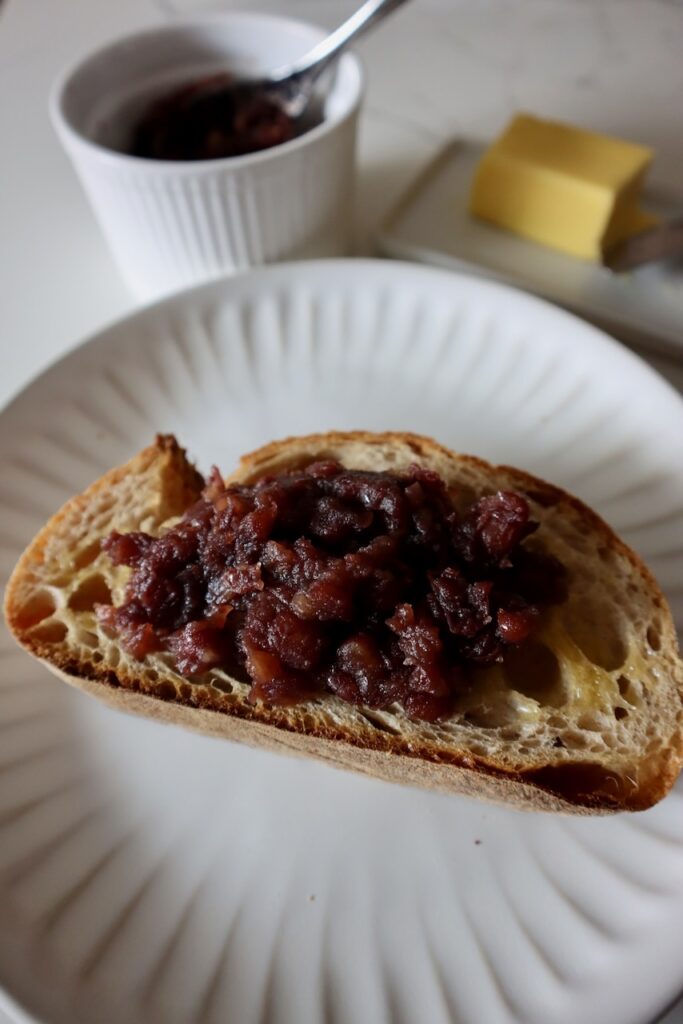
Short Video
A full recipe video is also available in the recipe box below and on our YouTube channel.
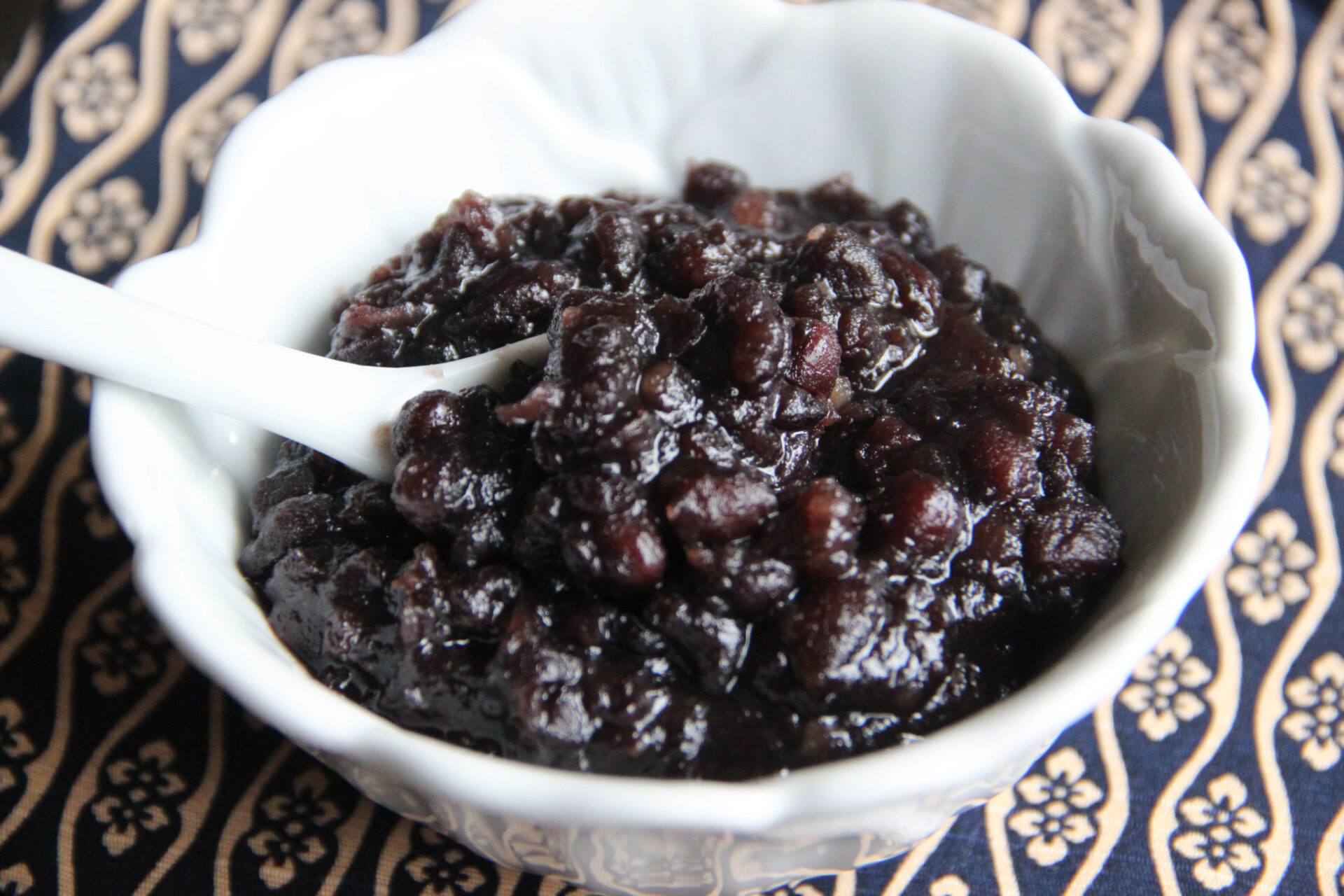
Anko (sweet red bean paste) Recipe
Instructions
- Put the red beans in a pot with 4-5 cups of water. Let boil for 5 minutes and discard water.
- In a clean pot, place the red beans and 4-5 cups of water, cover, and let it simmer at low heat for 1 1/2 to 2 hours (add more water to keep above the beans). The beans should now be very soft, easily crushed between fingers.
- Discard the water again, put the soft beans back in the pot with sugar at medium high heat and constantly stir and mix about 10 minutes until forming a paste that looks shiny but still loose. Immediately transfer the paste to a container.
Video
This recipe was originally published in November 2012. The post was updated on March 3, 2025 with more useful content, new photos and a short video.
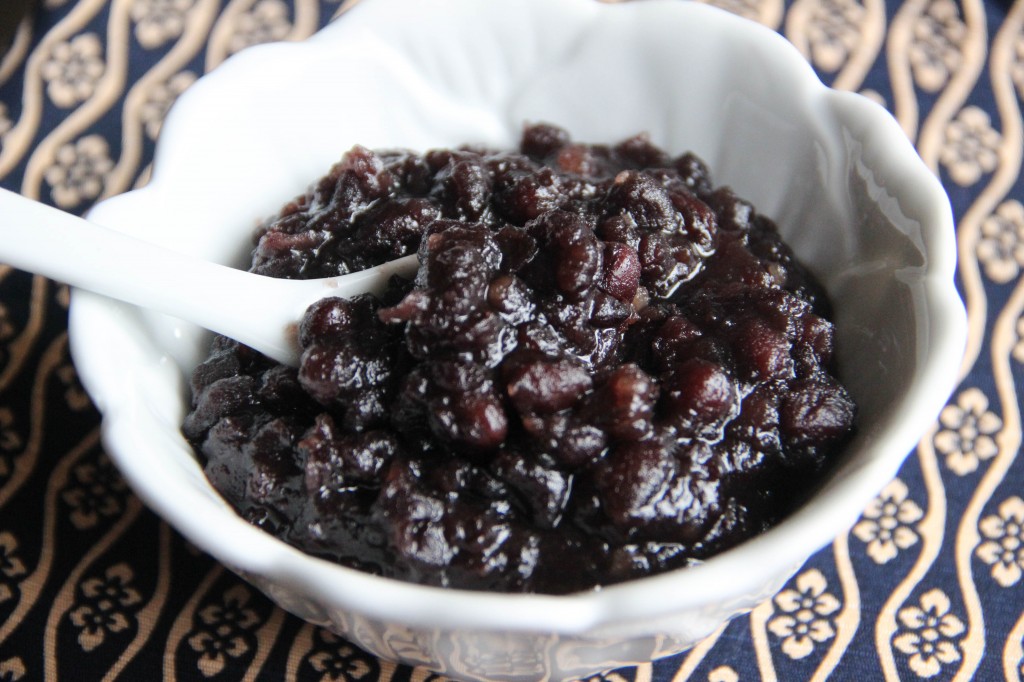


53 Comments
hi my name is Kane i love all your recipes on the website this was the first thing i made. I started for my GCSE coursework but now i start to make things all the time and i make them for my friends and family.
Thank-you for doing this
Hi Kane,
Thanks for trying our recipes! Come back for more!
Hi! Made some red bean paste for my red bean buns. Love the texture and taste. Sweetness is just right, my mother loves it too. Will definitely make more in the future, thinking of red bean ice cream! This easy peasy recipe is a keeper! Have already memorised it by heart. 🙂 Thanks for sharing such a practical recipe.
Sherry,
you’re welcome! Come back for more recipes!
I would love to try some Japanese sweet bean desserts. Can you recommend a book? Are there any places that mail orders pastries like these?
Linda,
I recommend you to use the recipes on our site 🙂 There are a lot of Japanese recipe books in Japanese, but I don’t know any in English, sorry. You can probably order pastries through Marukai or Mitsuwa web sites.
Japanese Farm Food by Nancy Singleton Hachisu is a japanese recipe book in English. I don’t know if it has sweets in it though. We found it at KEEP in Kiyosato, I think it was originally published in Canada.
Hi! Nice tutorial 🙂 awesome anko you made!
I have a question here, because I was thinking to use this red bean paste for macaron fillings later. How should I store this? And how long it can last?
Thanks a lot~!
If you can use it in a couple of days, refrigerate. But longer than that, I recommend to freeze it, and use up in a couple months.
Thank you very much for all the awesome recipes!!!!
I made dorayaki for our tea ceremony club and all my friends love it :). My Japanese friends said it’s just like the one at home.
If only we could make mochi (we don’t have mochi rice here 🙁 )………
I am looking forward to more recipe from you. Thank you again!! ありがとうございます
Alice,
go online to buy Mochiko, and we have a sweet mochi recipe!
Do you start with dried beans or canned?
Heather,
dried.
Hi, where I live I can only get canned bean! Is there any way can make the paste with it? Please reply!
gabi,
if it’s canned Azuki, it must be sweetened. You can probably cook down to reduce moisture and use it as Anko.
Hello!
I want to try this recipe, but I´m from Germany and we don´t have the unit ´cups´, we use grams.. So can you please tell me what 1 Cup is in gram? 🙂
Caroline,
we use a 240ml cup (American cup). If you are using a 200ml cup, use 1 and 1/5 cup.
I simmered them for 2 hours and they were still hard! I decided to follow the recipe and keep going, but when I was done the beans weren’t even fully cooked. Not only this, but your mochi recipe was terrible too. I mixed the amount of mochiko and water you said to and instead of being too dry or soft dough, it was MUSH. I had to add another half cup of mochiko just to make it sort of like soft dough.
Jackie,
I’m sorry to hear it didn’t come out very well. If you cook Azuki red beans for 2 hours and still hard, that means beans are old or something wrong with them. We have tested our Sweet Mochi recipe more than a couple of times before we put up on internet, so I don’t know what went wrong with your Mochi. Did you use 1 cup (240ml cup) of Mochiko and 3/4 cup (180ml) of water?
maybe try soaking them overnight and cooking them the next day? (: that’s what I did and they turned out great ^-^
Cristina,
soaking doesn’t hurt, but not necessary.
hi! i can’t find azuki beans in my country… would this recipe work with dark red kidney beans?
dinosaur,
they have totally different flavors and textures, but you could certainly try. Have you looked online?
They call them red mung beans here in Australia, maybe see if you can find those
Hi ladies I was about to make the anko but I started reading the comments and I realized I bought red beans the packet didn’t say azuki beans so it’s not going to work if it’s not azuki beans?
Ana,
I’m not sure what kind of red beans you bought, so it’s hard to say how they will turn out. Anko works best with azuki beans. Other beans may have different size, texture, flavor, etc. so may cook differently. You already bought the beans so you could go ahead and give it a try. Good luck 🙂
All I could find in my town was canned azuki beans.. Do I drain them and then cook them or.. Use them without cooking and just drain? Good recipes by the way
I assume it’s cooked and sweetened Anko. If it is too loose cook down, or add water to make it soup (Zenzai).
Hi,
I want to make Anpan soon but I prefer bean paste to have a smooth texture. Can I just blend this bean paste to make it smoother or is there a different recipe for smooth bean paste? Thanks
Ame,
we don’t have Koshian (smooth type of bean paste) recipe yet. You could process red bean paste in a food processor although how to make Koshian is much more complecated.
I just pushed mine through a strainer to smooth it and it was fine,
Thank you for the great recipe! For me, I had to stretch out the final 10 minutes to a bit closer to 15 or maybe 17. The beans were initially too ‘soupy,’ but I lowered the heat to medium and kept stirring for another few minutes, and they thickened up nicely.
I am really glad you mentioned the age of the beans in one of your comments. In my area (suburban New Hampshire), and I suspect in most parts of the US, it is very difficult to find adzuki beans that are actually fresh enough. There were three different brands in my local Asian grocery, and only one of them had an expiration date in the future. Last time I’d tried this was with bulk beans ordered online – they never cooked down, so I suspect they were quite old. Armed with the knowledge that they had to be fresh, I bought the right beans and the recipe worked perfectly.
I am going to use this to make An Pan, and I suspect I won’t have any trouble using up the rest of the beans I have. The Anko is delicious, and I want to make it again and again! Has anyone tried putting it in milk tea (bubble tea) instead of tapioca? I am looking forward to trying that.
Phoebe,
people tend to think beans last forever, but they don’t. Expiration dates for beans are usually within a year. Hope you can find a good supplier.
Hello!
I can not wait to try this recipe! I have a question one question. I had a friend in school who was from Japan and her mother used to make us rice balls and bean paste. Have you ever heard of that? I have been trying to find a recipe for it. Is Anko usually the bean paste served with rice balls?
Brittany,
that’s Ohagi. It uses cooked mochi rice which is different from regular steamed rice.
Hi, I’ve tried the recipe today (found quite fresh azuki beans in a local vegie shop (and I live in 6k town/city of central Europe) and while I made some mistakes (mainly wasted some of the finest paste, when I pressed the mass after phase 2 (90-120min) too much through strainer and the some of the paste got into the sink), it turned really well.
In comparison to my friend’s recipe (she prepares it the hard, traditional way – only smooth paste), it was much sweeter (not a big fan), so I will adjust it next time.
AKA for next time:
1cup of azuki beans
3/4 cup of sugar
Ryuu,
glad you liked our Anko recipe! The best part of home-cooking is to be able to adjust the taste to your liking!
I looked at two different Asian stores and looked for Anko but I couldn’t find it but I found red beans but canned, so what do I do, what do you mean by cook down, and what of you mean loose, I never learned how to cook yet but I want Anko and Dorayaki to be my first recipe, I am sorry if I sound dumb this is all new stuff to me and I found out about this stuff in Doraemon it is dubbed and is on Disney XD I love it, I wonder how this never made it in North America someone tried to dub it earlier but had unknown complications and was dropped, it makes me mad, and sorry if I bothered you, I feel dumb.
Daniel,
if canned Anko is too watery, you can cook and thicken it so that it is thick enough (and doesn’t run) to sandwich with pancakes. Best looking Dorayaki was in Doraemon, always!
I tried making Anko today with this recipe and it worked out great! Made Dorayaki with it and my family loved it!
Thank you so much for sharing your recipes and everything <3!!
Petra,
glad yo liked our Dorayaki recipe! We have many more sweets recipes!
Hi, Do you have a recipe for just sweetened red beans? Instead of paste form. Or is this something I would buy at a Japanese store like Daido? Thanks for your help!
I tried this recipe and it really is easy and yummy! Perfect for the sesame balls I made for my family, brought old memories of home. Thank you so much!
Mavis,
glad you liked our Anko recipe!
I just made this glorious mixture! I was short on sugar so I had to add a tiiiiny amount of brown sugar to it. I was so afraid it was going to mess it up, but I was pleasantly surprised that it didnt’! Now I just need to wait for it to cool so I can make my An Pan!
Hello,
I really love your recipe as they are simple and very tasty. I tried the mochi last time and I used the wrong sugar as there wasn’t any indication telling me to use crystal sugar ha ha. But it still came out nice. So, I would like to ask before starting this yummy mixture if I need to buy a special type of red bean, please?
Always thanks ~
OMG HOW MUCH LOVE THIS SITE
Is this what would most often be used in Goza-Soroh? I cannot find any recipe for Goza-Soroh and really want to try those magical looking cakes.
Rod,
this Anko is Tsubu An (red bean paste with chunky whole red beans ) as opposed to Koshi An (smooth and strained).
The anko recipe was really good! I really want to make some mochi to go with it but unfortunately all I can find is glutinous rice flour, even when I search it up online 🙁
Blue,
did you try to search with Mochiko?
This is so delicious! I had to cook the beans for 3 hours, but they came out perfectly soft. Also, my family prefers things less sweet so I only used half the required amount of sugar. I put this on top of your dango recipe and it was an instant hit. Thanks for the amazing recipe!
Hey love the recipes. Do you have a book so I can gift one to my mother?